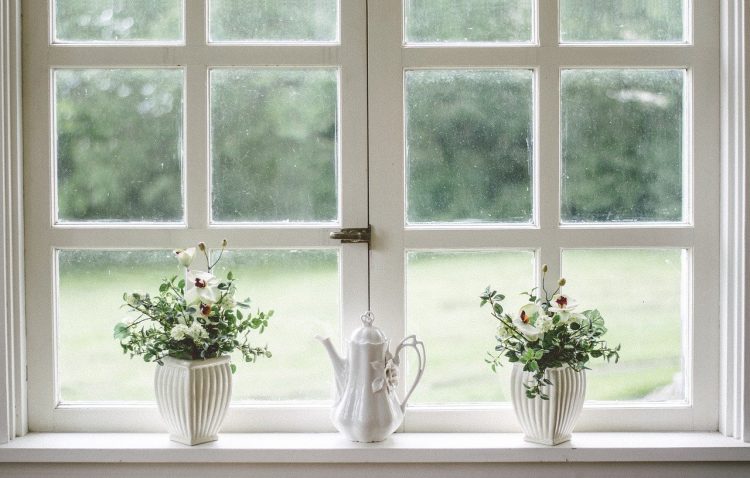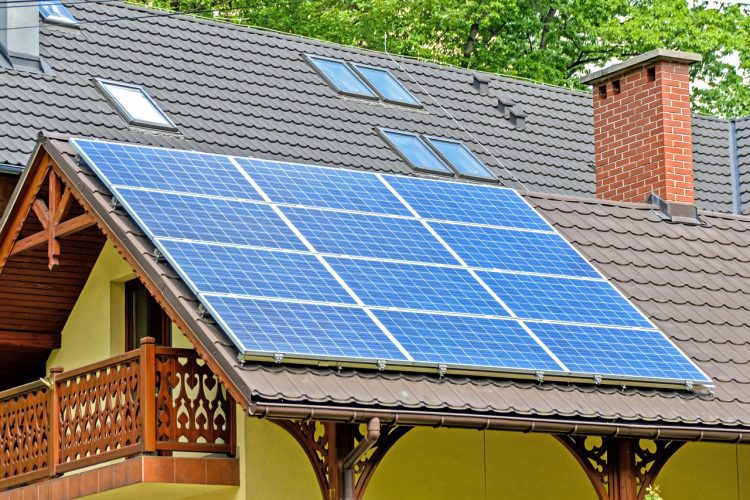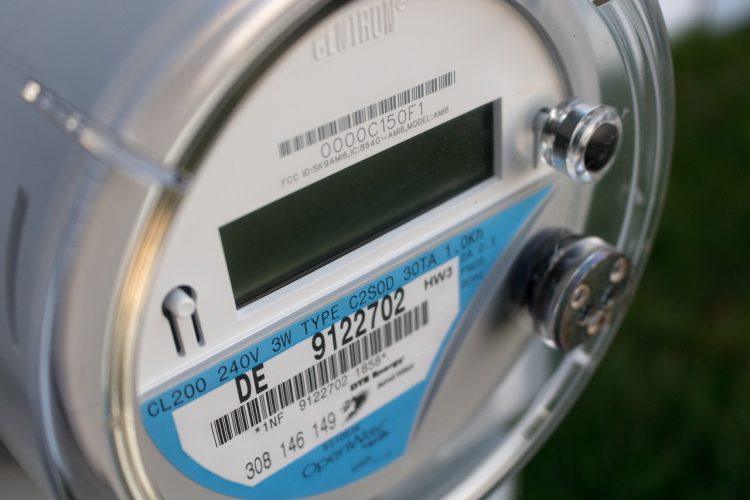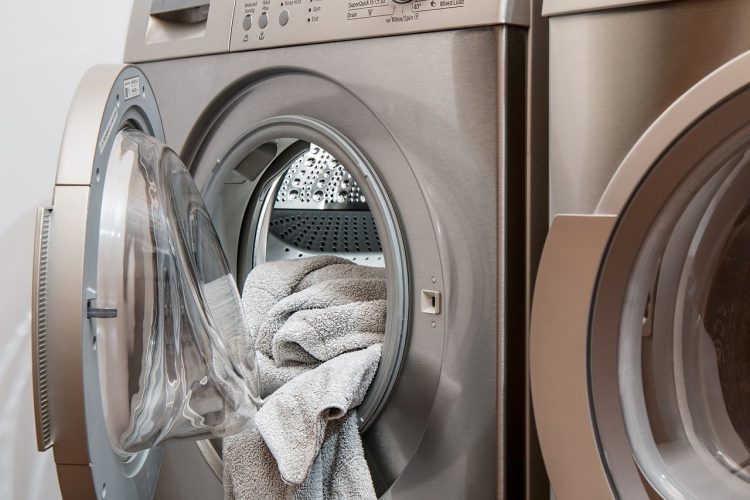10 Ways To Improve The Energy Efficiency of Your Home
The Best Ways to Make Your Home More Energy Efficient
This article, 10 Ways to Improve the Energy Efficiency of Your Home, has been posted in exchange for compensation, and was not written by Designs by Studio C. Great articles like these are what keep Designs by Studio C able to provide more fabulous DIY and home improvement content, plus free furniture plans for all to enjoy!
Energy efficiency. It is one of the most popular phrases of our generation, and it is the gold standard for modern dwellings. And there is a lot that can be done in the effort to waste less of the things around you, save money, and contribute to the preservation of the environment. But, before we get into the specifics, it is crucial to define what exactly “energy efficiency” implies in this context.

Image by Albert Häsler from Pixabay
What do we mean by energy efficiency?
Houses are not impenetrable. If the outside world manages – the cold or the heat – manages to creep in, you will find yourself consuming extra energy to perform two very crucial things: stay warm and stay cool. However, if you have energy efficiency on your mind, this does not have to be the case.
Simply put, energy efficiency is the ability to accomplish more with less. For example, energy efficient upgrades such as light bulbs produce the same amount of light as traditional ones but use less energy and generate less heat.
Similarly, if two buildings both generate heat using the same amount of energy, the structure that can retain more heat is more energy-efficient than the building that allows more heat to leave.
Why is energy efficiency so important?
The waste that we produce in our homes accounts for about 21% of the global warming emissions that we produce annually. And it also can be argued that having energy efficient house features will make you feel like you’re living more sustainably and less pollution-wise. It will also save you significant amounts of money when it comes to your energy bills and increase your home’s value should you wish to sell it in the future.
Here, we look at some of the top ways to make your home more energy-efficient:
1. Make sure that your roof is insulated
You have probably heard the old adage that we lose the most heat through our heads. It is the same with the roof of a building. Just as it is prudent to put on a woolly hat when the weather gets chilly, taking the required steps to insulate your loft is a fantastic idea. Putting insulation into your loft space is a relatively easy and inexpensive job, so there is no excuse for not doing it!
2. Invest in cavity wall insulation
In any case, insulating the hollow or solid walls with wall insulation could be a very cost-effective solution to retain heat in your home and reduce your energy costs. In addition, if your walls are composed of more durable materials, solid wall insulation might have an even more significant impact. This is because solid walls allow twice as much heat to escape as hollow walls. Furthermore, while solid wall insulation might be a more expensive project, depending on whether you pick internal or external wall insulation, it is essential to note that the savings on your heating expenses will be more significant due to the investment.
3. Ensure your windows are draft-proof
Insulating your windows is one of the most straightforward and immediately beneficial ways to improve your home’s energy efficiency. If your home feels cold in winter, no matter how high your heating is turned up, it is a good idea to invest in some energy efficient windows to keep the drafts at bay. Not to forget the higher levels of peace and quiet you will experience as a result of this.

Image courtesy of Pixabay
4. Make sure you have an efficient boiler or furnace
Inefficient boilers are a key source of high energy expenses in the home. Your boiler is responsible for approximately 55% of your energy bills. All of your electrical appliances combined produce more energy than this! And when they consume more power than they require to operate, it is yet another unnecessary source of excess carbon that is introduced into the atmosphere.
Boilers become more energy-efficient every year, so if you have not replaced your boiler in the last ten years, you should consider upgrading to a more energy-efficient model. In addition, upgrading to a newer or different boiler may be a better fit for your home and the way you choose to heat it. To install underfloor heating, for example, a modern condensing boiler will provide maximum performance.
5. Add solar panels
While there is no denying that installing solar panels can be a significant expense, it is also one of the most effective things you can do to save energy in your home over the long term. Furthermore, with the price of solar panels offered by solar energy companies being 70% less expensive today than in past years, it has become significantly more accessible in recent years.
Higher-capacity solar systems can generate up to 4kWp, which is sufficient to cover the energy needs of a family of 3 to 4 people!

Image courtesy of Pixabay
6. See if your utility provider can offer you a better deal
Changing your energy provider – ideally with a company that uses renewable energy – is one of the most straightforward methods to reduce your energy bills. For example, The correct agreement will not only assist you to save money on your utility bills, but it will also allow you to use significantly fewer fossil fuels, which is beneficial to both you and the environment.
7. Watch your general consumption
It is easy to miss the tiny things – but a large number of small activities can add up to significant transformation. Do things like switch off the lights when you leave a room, and make investments in something like a water-saving showerhead and an eco-kettle to help reduce your carbon footprint.
To keep your radiators operating as efficiently as possible, we also recommend a yearly bleed of the system.
Even something as easy as lowering your thermostat by a degree or two can have a significant influence on your energy bills while having little impact on the overall temperature of your home’s interior.

Image courtesy of Pixabay
8. Hang thick drapes and insulate your doors
Sometimes the most straightforward answers are the most effective. For example, in addition to preventing heat from escaping through windows, thicker curtains will make your home significantly more comfortable, especially as the evenings grow longer.
Also available is low-cost stick-on insulation that may be used to cover the edges of drafty doors, which will result in a warmer home and cheaper energy bills.
9. Turn off appliances when you are not using them
When it comes to energy conservation, turning off light bulbs and appliances after usage are both highly successful strategies for saving money on electricity. This includes laptops, televisions, printers, and washing machines, among other things. Cell phones are also significant energy users, so when they have finished charging, make sure you unplug them.
10. Wash your clothes at a lower temperature
When you wash your clothes at 30 degrees instead of higher temperatures, you save approximately 40% on energy use. The only thing to remember is to use a laundry detergent that is effective at lower temperatures; otherwise, you will be forced to wash your garments many times, defeating the purpose.

Image courtesy of Pixabay
The final word
Every single thing you do, no matter how insignificant, has the potential to make a difference. Keep these energy efficient examples in mind as you take whatever actions you can! Not only can a well-insulated, energy-efficient home cut your utility bills and increase the value of your home, but it can also contribute to a cleaner, greener environment for all of us.
Featured image courtesy of Pixabay

